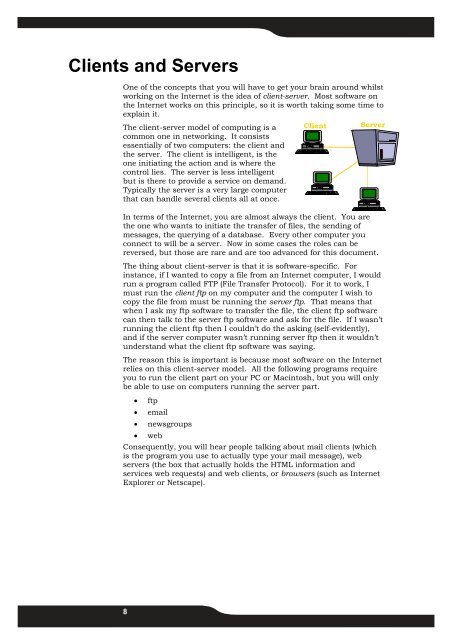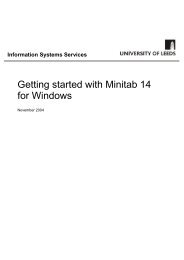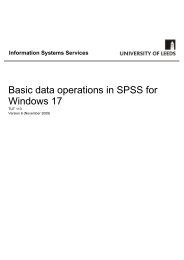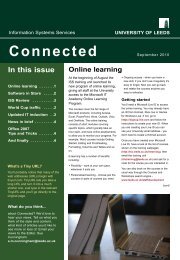Download Now - ISS - University of Leeds
Download Now - ISS - University of Leeds
Download Now - ISS - University of Leeds
You also want an ePaper? Increase the reach of your titles
YUMPU automatically turns print PDFs into web optimized ePapers that Google loves.
Clients and Servers<br />
One <strong>of</strong> the concepts that you will have to get your brain around whilst<br />
working on the Internet is the idea <strong>of</strong> client-server. Most s<strong>of</strong>tware on<br />
the Internet works on this principle, so it is worth taking some time to<br />
explain it.<br />
The client-server model <strong>of</strong> computing is a<br />
common one in networking. It consists<br />
essentially <strong>of</strong> two computers: the client and<br />
the server. The client is intelligent, is the<br />
one initiating the action and is where the<br />
control lies. The server is less intelligent<br />
but is there to provide a service on demand.<br />
Typically the server is a very large computer<br />
that can handle several clients all at once.<br />
Client<br />
Server<br />
In terms <strong>of</strong> the Internet, you are almost always the client. You are<br />
the one who wants to initiate the transfer <strong>of</strong> files, the sending <strong>of</strong><br />
messages, the querying <strong>of</strong> a database. Every other computer you<br />
connect to will be a server. <strong>Now</strong> in some cases the roles can be<br />
reversed, but those are rare and are too advanced for this document.<br />
The thing about client-server is that it is s<strong>of</strong>tware-specific. For<br />
instance, if I wanted to copy a file from an Internet computer, I would<br />
run a program called FTP (File Transfer Protocol). For it to work, I<br />
must run the client ftp on my computer and the computer I wish to<br />
copy the file from must be running the server ftp. That means that<br />
when I ask my ftp s<strong>of</strong>tware to transfer the file, the client ftp s<strong>of</strong>tware<br />
can then talk to the server ftp s<strong>of</strong>tware and ask for the file. If I wasn’t<br />
running the client ftp then I couldn’t do the asking (self-evidently),<br />
and if the server computer wasn’t running server ftp then it wouldn’t<br />
understand what the client ftp s<strong>of</strong>tware was saying.<br />
The reason this is important is because most s<strong>of</strong>tware on the Internet<br />
relies on this client-server model. All the following programs require<br />
you to run the client part on your PC or Macintosh, but you will only<br />
be able to use on computers running the server part.<br />
• ftp<br />
• email<br />
• newsgroups<br />
• web<br />
Consequently, you will hear people talking about mail clients (which<br />
is the program you use to actually type your mail message), web<br />
servers (the box that actually holds the HTML information and<br />
services web requests) and web clients, or browsers (such as Internet<br />
Explorer or Netscape).<br />
8














